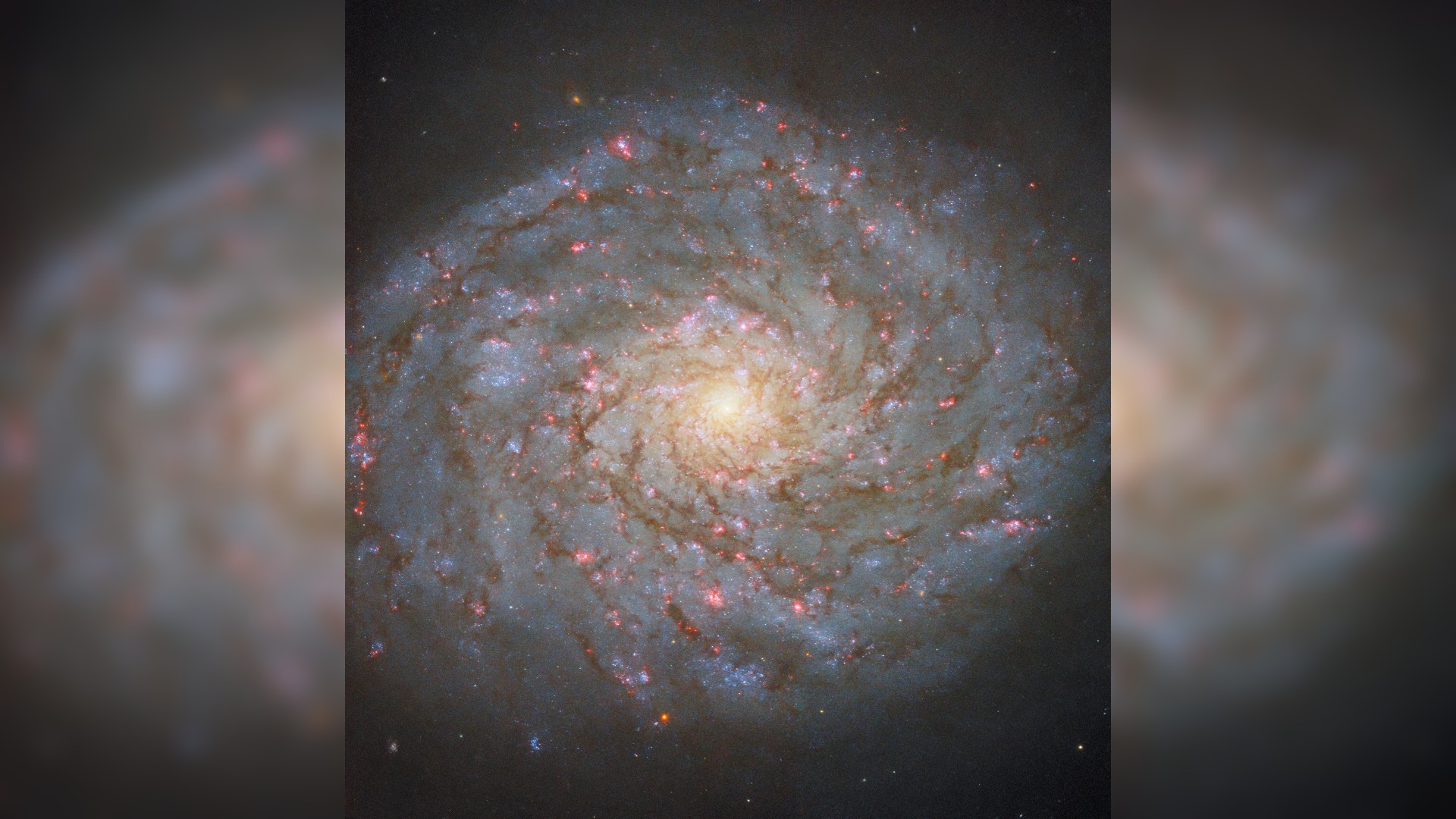
A bejeweled galaxy shines brightly in a stunning new photo from the Hubble Space Telescope.
The nearby spiral galaxy, formally known as NGC 4689, lies only 54 million light-years from Earth. It is located in the constellation Coma Berenices, which means "Berenice's Hair" in Latin and refers to Queen Berenice II of Egypt. As such, NGC 4689 swirls through the Queen's sparkling strands.
And that name once had a literal meaning. "Some people of Berenice's time would have meant this quite literally, as the story goes that her court astronomer thought that a missing lock of Berenice's hair had been catasterised (a word meaning 'placed amongst the stars') by the gods: Hence the name of the constellation, Coma Berenices," European Space Agency (ESA) officials said in a statement releasing the new photo on May 24.
Related: Dusty galaxy looks like a cosmic net in gorgeous new Hubble Telescope photo
This is not the first time Hubble has photographed NGC 4689. Prior to this recent view, the space telescope studied the spiral galaxy in 2019. Both observations were made while Hubble was assigned to survey neighboring galaxies.
Hubble, along with its successor, the James Webb Space Telescope, play an important role in developing our understanding of how galaxies form and evolve over time and between observations.
"Observations collected by Webb stand to transform our understanding of how galaxies change and evolve over time, by providing infrared data at an unprecedented level of detail and clarity," ESA officials said in the statement. "However, ultraviolet and visible light observations from Hubble — such as those used to create this image — complement Webb's observations."
Compared to Webb, Hubble offers a more accurate assessment of the stellar populations of nearby galaxies, which is crucial to understanding their evolution.
It is observations of nearby galaxies, like NGC 4689, that not only provide valuable insight on the history of the universe, but also the formation of our own galaxy, the Milky Way, which may share more common origins with its neighbors.







